Visiting Libya is not on everyone’s bucket list and we understand why.
When we told people we were travelling to Libya soon, they were either stunned or had admitted they know very little about the country.
We may earn affiliate commissions from websites we link to, at no cost to you. Click here for details.
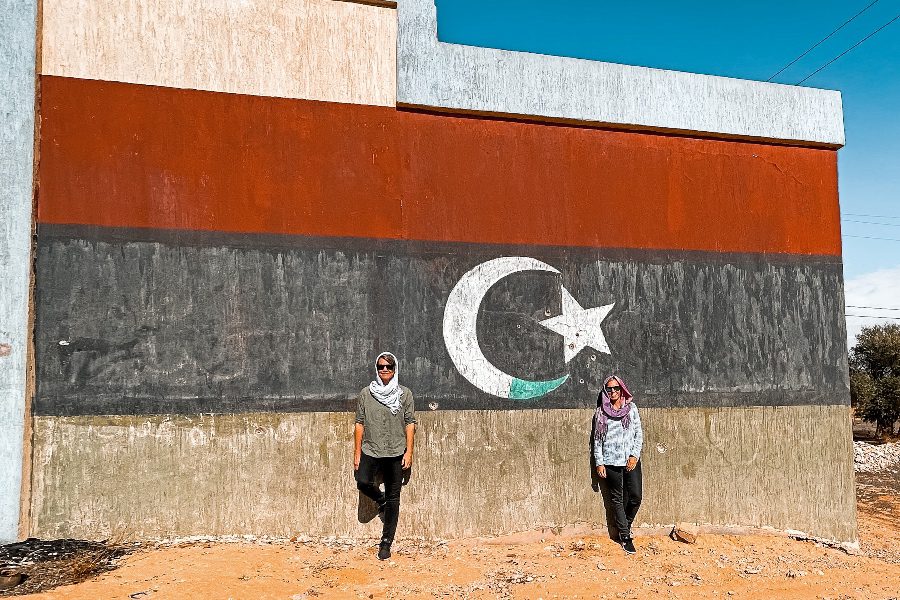
The first things that come to mind were words such as civil war, dictatorship and instability.
Sadly if you have heard about Libya, it definitely was not on the travel channel.
Visiting Libya as a tourist is not a thing. In fact, there is no tourist visa and I personally think it would be one of the least visited countries in the world in the past years if we had any access to the data.
There are 193 countries in the world according to the UN and travel to Libya is as off the beaten path as it gets.
Table of Contents
Everything about visiting Libya was a challenge. Back in 2019 when we spent most of the year exploring the African continent, we quickly realised that Libya will be a difficult one to visit.
There were no tourist visas offered, the only option was to obtain a business visa. To make it even harder, we found out that some of the visas (Yemen and Afghanistan) in our passports might be a problem for clearing immigration.
We decided to come back to Libya on our new passports. But, in order to receive the visa, you must first get an invitation letter issued by the Ministry of Foreign Affairs in Libya.
Sadly, we were denied the first time, apparently because we were two women travelling together.
I guess two women visiting Libya on business might have raised some eyebrows. Who knows.
We tried again with the support of a different company and this time we got it. All we needed to do was drive to the embassy in Australia to get the visa as we didn’t have the time to wait for it in the mail.
Again there were some nationality issues, but with some smooth-talking, we managed to secure it.
Then the pandemic began, and in March 2020 we found ourselves on a friend’s sofa in London, awaiting the news if we could fly into Libya.
The text came in: Do not come; borders have closed. We had 9 countries remaining to visit every country in the world.
Fast forward 20 months later, which we spent in Australia doing a whole lap of OZ and the possibility of a visit to Libya has resurfaced.
We could finally leave Australia, and we applied for our visa again. And a few weeks later, here we are in Libya.
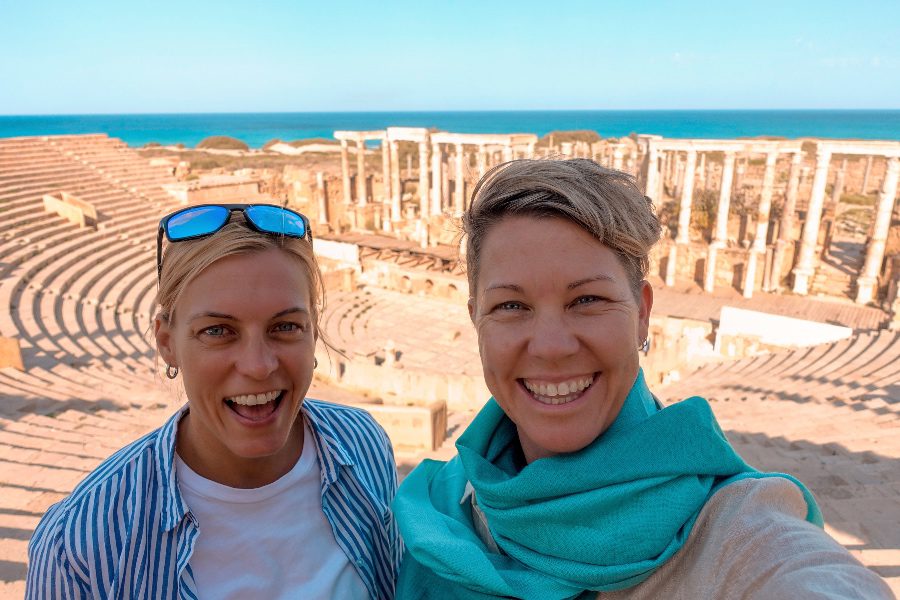
Surprisingly we were not nervous before boarding the plane to Tripoli. Somehow in the time of Covid-19 literally anything can happen and you need to be able to adapt.
For the few who are visiting Libya, daily flights from Tunis are the best option.
Arriving at Tripoli Airport was smooth, and luckily we were not questioned about our business visa, our local agent on the ground seemed to believe it was because we wore headscarves.
Hijab is not compulsory in Libya. The only country in the world where the hijab has to be worn by law is Iran.
However, since all women wear one in Libya as well as in Somalia, and Saudi Arabia, we wore it most of the time.
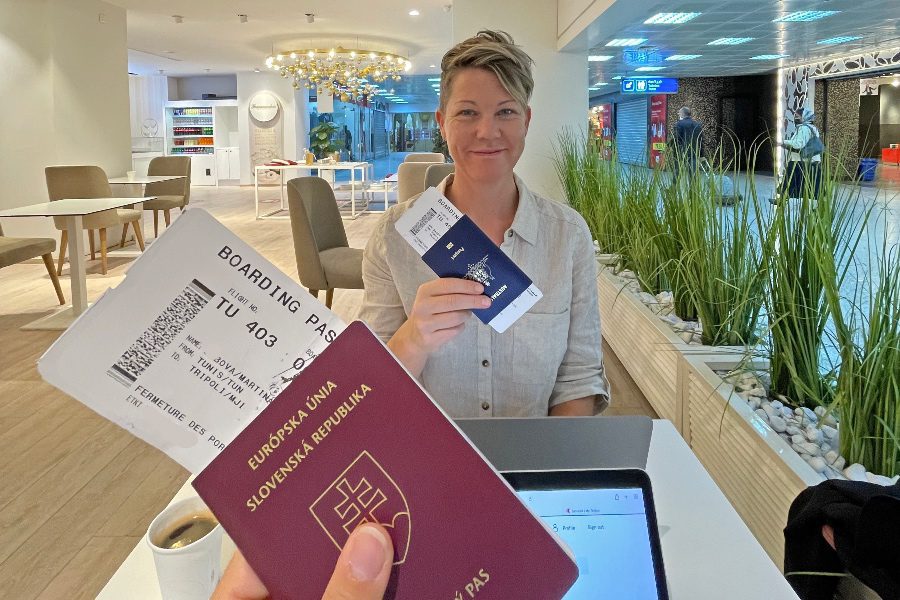
Tripoli is the capital city located on the Meditteranean Sea. The water is beautifully blue and you could imagine tourists visiting Libya on package holidays like the neighboring countries.
But the coast was not really developed.
I asked our guide why the coast is so undeveloped. The coastal area which would be considered prime real estate in Europe, Australia, and many other parts of the world, is used for parking or left vacant in Libya, even within the city of Tripoli.
He agreed and told me that nobody thinks much about it. Fishing doesn’t seem to be a thriving industry either.
Sadly in the past, Libya went through famine but never did take the opportunity of the abundance of fish in the sea he told us.
Tripoli for us felt like other cities we have seen. A mixture of North Africa (Tunis and Cairo) with some elements of Beirut. There were some unfinished buildings as a lot of development has stopped after the fall of Gaddafi in 2011.
We stayed at Victoria Hotel in the downtown area with views over the city and the sea.
Amazing views at sunrise and sunset.
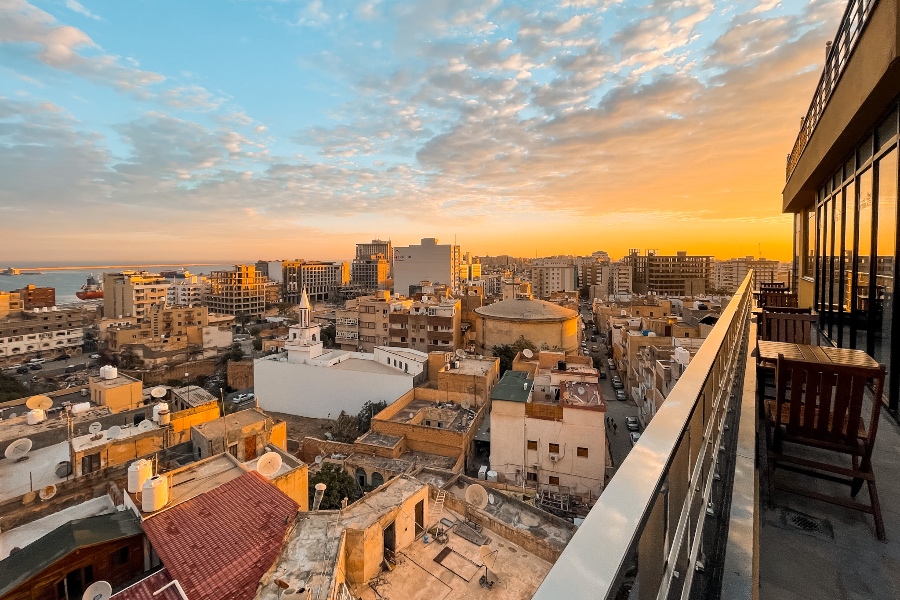
The highlight of Tripoli was definitely the old Medina. There is some restoration in progress, new tiles are being laid and it will bring back its old charm.
Some parts of it were already completed and it looked great. The souks were buzzing with curious shop owners welcoming us in. I am sure two blondes are a rare sight here as are any foreign visitors.
It was such a joy to explore the souks, each dedicated to a different trade or product. We learned more about traditional clothes and other trades unique to Tripoli.
We even found a souvenir shop with some trinkets and plates, most of them were authentic handicrafts. There were many other treasures and quite frankly we could spend a day wandering around here.
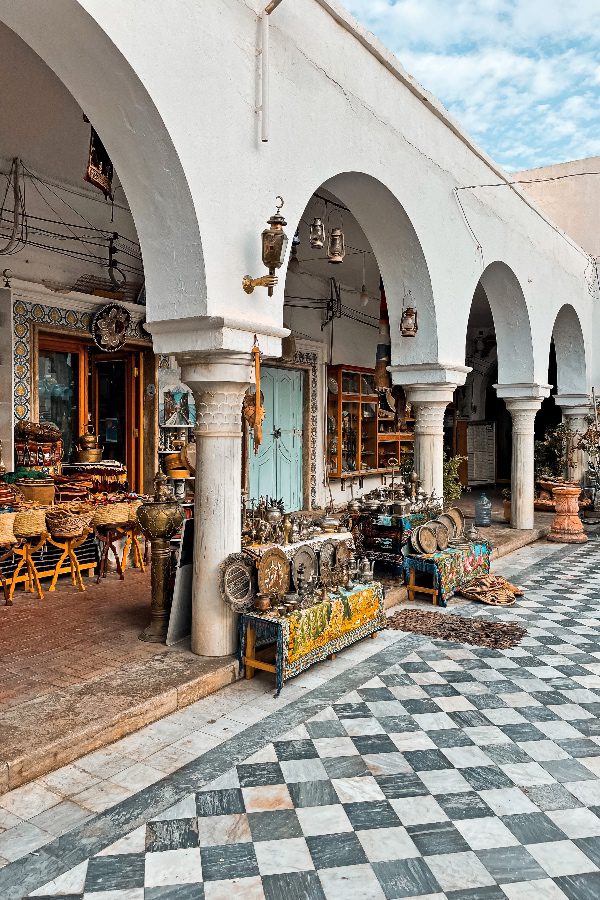
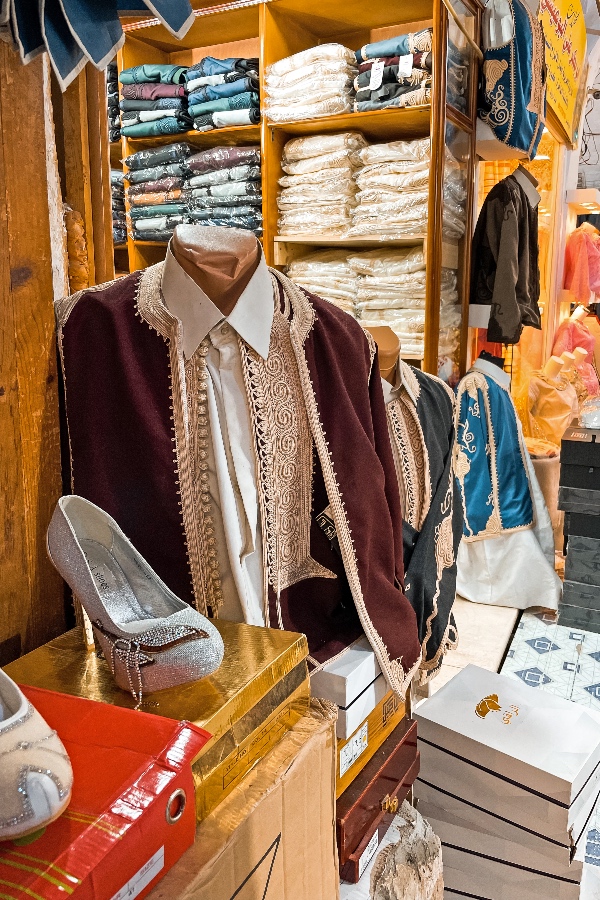
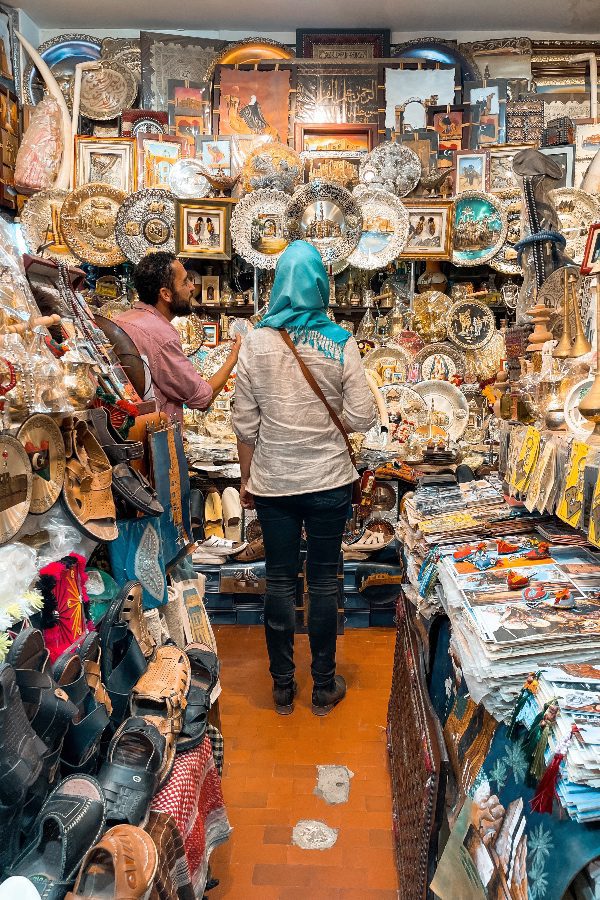
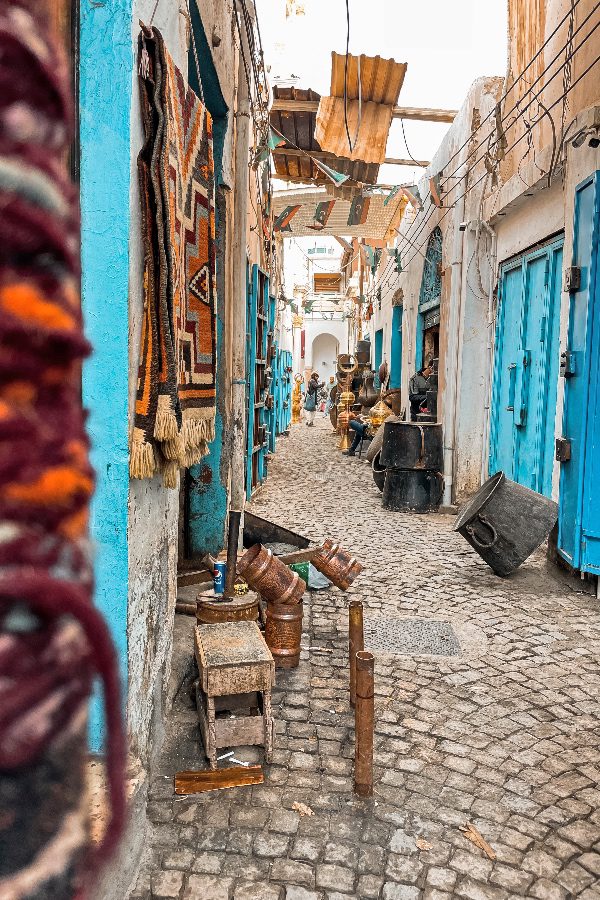
At the entrance of the Medina is the arch of Marcus Aurelius which is the only remaining part of Roman ruins here in Tripoli. And it’s amazing!
It was constructed in the 2nd century and since the Romans used marble to build it, it is still standing. We found more Roman columns in the Medina, but these were simple pieces that were found and reused for newer structures.
Still very cool as it gave them a new purpose and they have been also preserved. We knew visiting Libya would include some great treasures from the Roman times (more about that soon) and the Marcus Aurelius arch should have prepared us for what was coming.
We love visiting archeological sites when we travel and even wrote an article on 20 Most Amazing Archeological sites hoping that one day we complete the list and see them all when visiting Libya is possible.
And now only 2 of that 20 remain (Easter Islands and Palmyra in Syria).
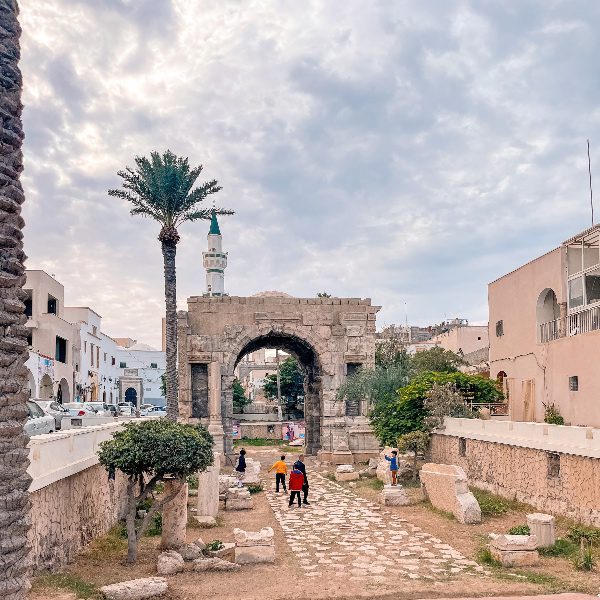
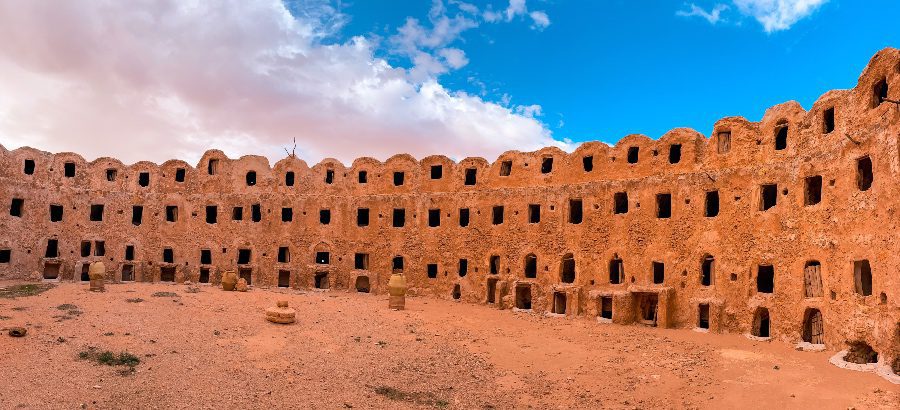
We got the chance to visit an ancient granary, Qasr al-haj, and nearby Berber villages. The granary took out breath away!
The structure is more than 800 years old and it was built to store olive oil, and grains such as barley. And just wow, it is so impressive to see.
You can walk up the stairs and peek into the individual rooms and there is a nice collection of the pottery found here at the entrance.
Our guide explained that the granary was used to store food but it also served as an overnight place for travellers from West Africa on the way to Mecca.
RELATED POST: 17 Things to Know Before Travelling to West Africa
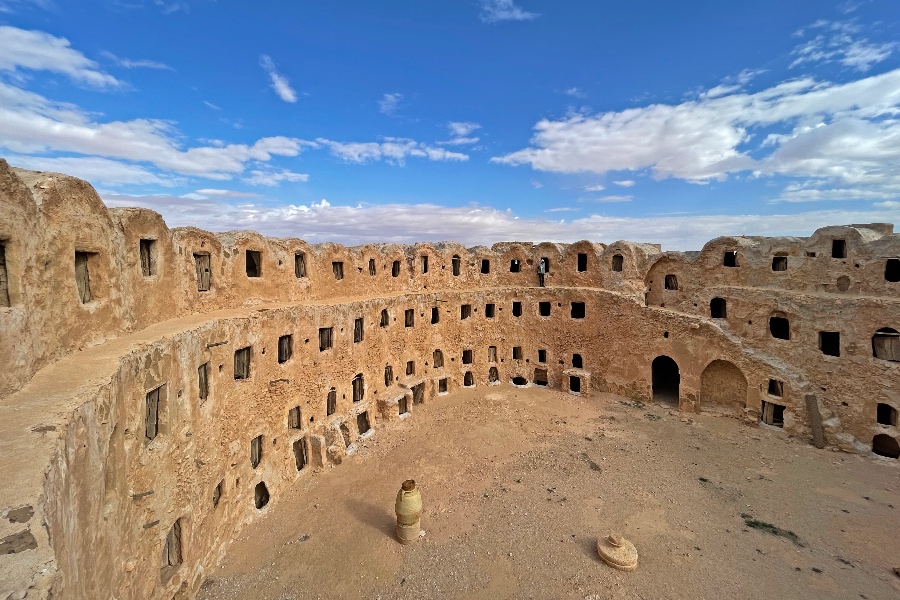
We continued our journey through the mountains and passed through Berber villages, many of them proudly displaying Berber flags and Berber writing could be seen on signs.
The Berbers are the indigenous people of North Africa and as the culture and language were suppressed during Gaddafi’s rule, it’s experiencing a revival.
To combat discrimination and reclaim their identity, the indigenous peoples use the terms: Amazigh (singular), Imazighen (plural) to refer to themselves.
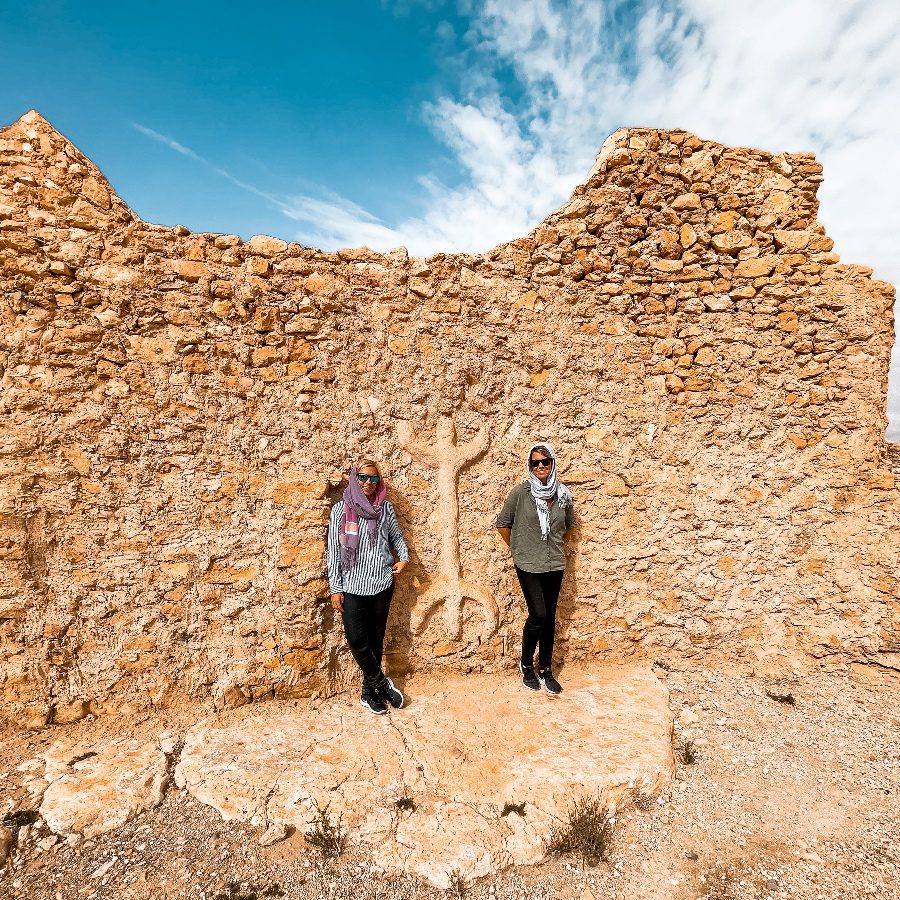
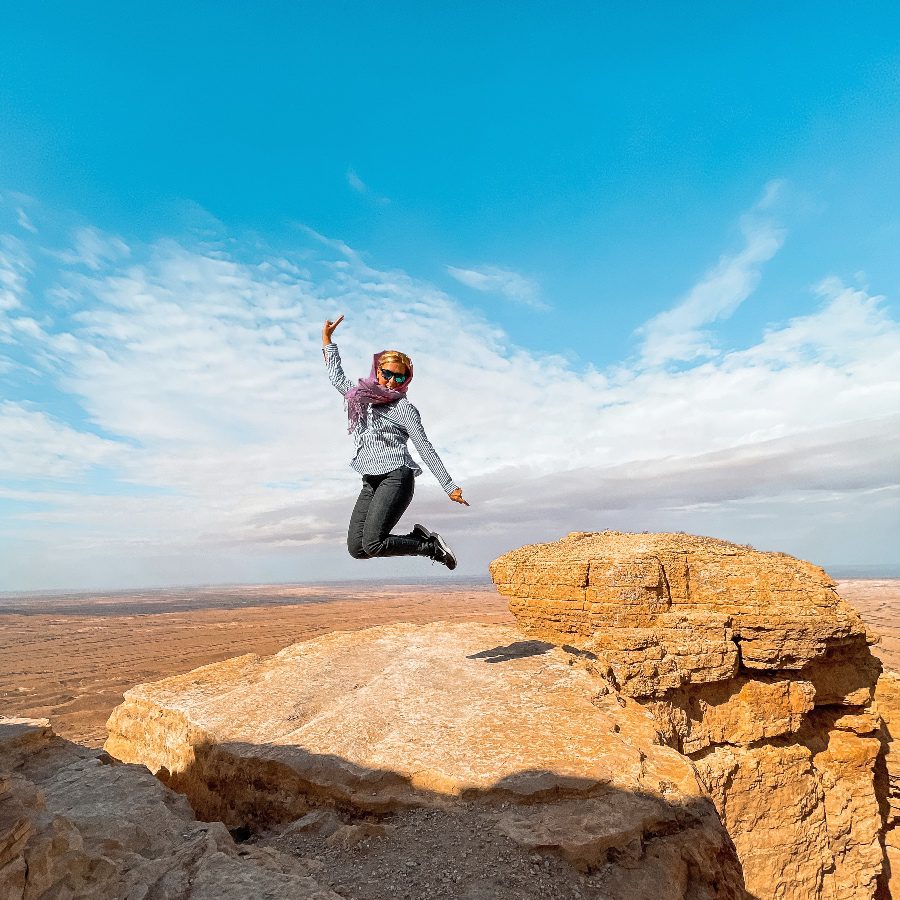
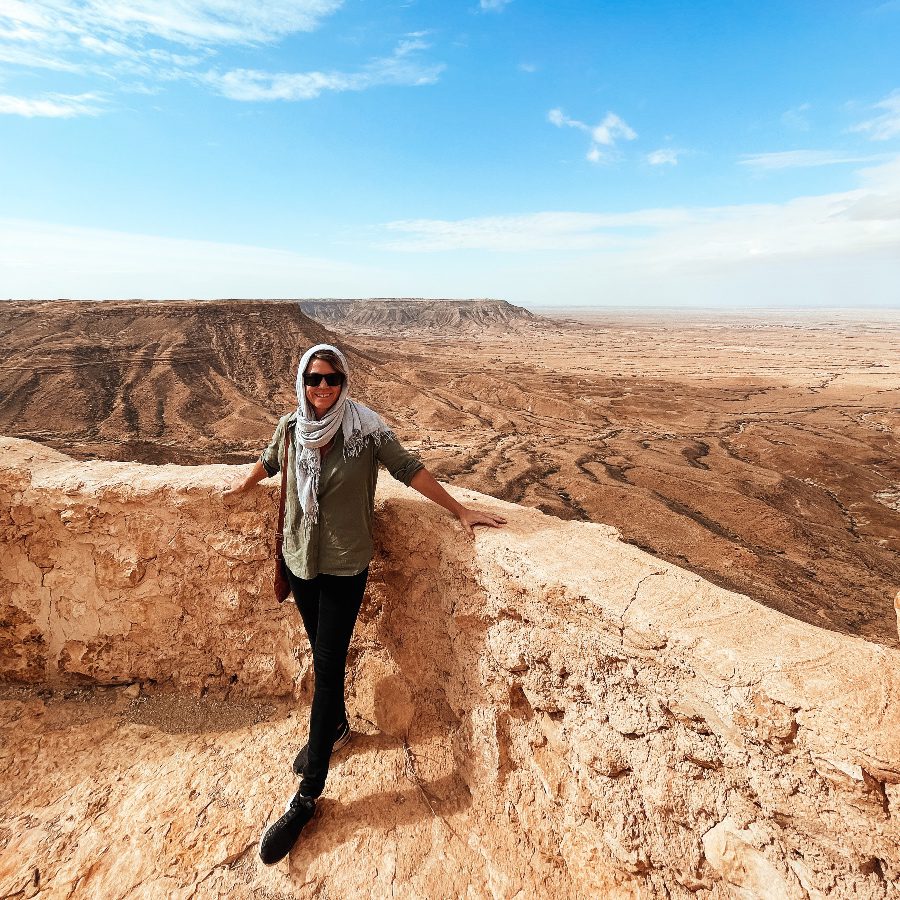
We stopped to see the abandoned Berber village of Tarmeisa built on a narrow rocky cliff with incredible views across the landscapes all the way to the coast. So stunning!
This fortress-like architecture would withstand the cold winters and any conquest and it has a particular design. The only entrance was through a town gate, which once had a drawbridge.
The bridge was opened every morning at 6 am and closed again at 6 pm, effectively sealing off the town.
It was here that many Amazigh retreated from invading Arab armies in the 7th century, and the Jebel Nafusa (Mountain Nafusa) remains one of the few areas in Libya where their culture still thrives.
Subscribe to our newsletter!
Expert travel tips, resources and exclusive discounts worldwide
Lunch stop at Gharyan
Our lunch was at a unique cave home, called a troglodyte. It was entirely built into the soil. It is dug more than 10 metres down, essentially underground.
The food was simply incredible. Undoubtedly, you will always get better traditional food at someone’s home than at a restaurant.
But this time it was exceptional!
We had Libyan soup with homemade bread called bizan. A rice pilau dish with fresh almonds and salad followed with homemade sweets. It was honestly one of our highlights of Libya.
Libyan Food has surprised us in many ways, we even posted about our 10 favourite Libyan dishes.
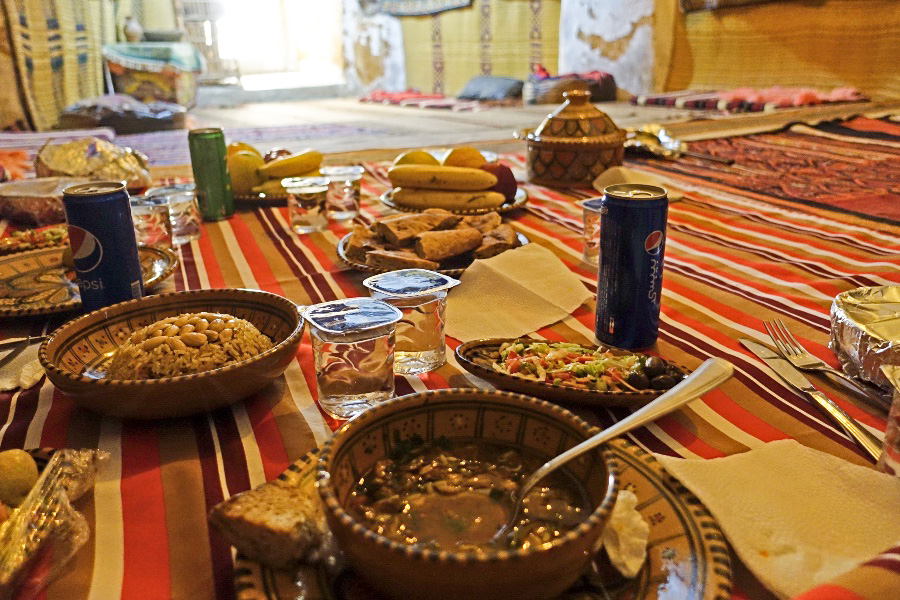
If you ask any Libyan what the biggest treasure is, he or she will probably say oil. And honestly, they might be right as Libya is believed to be the 9th richest country in the world regarding oil.
But if you ask any serious traveller, he or she will most likely name the Roman city of Leptis Magna and Sabratha.
Sabratha in Libya
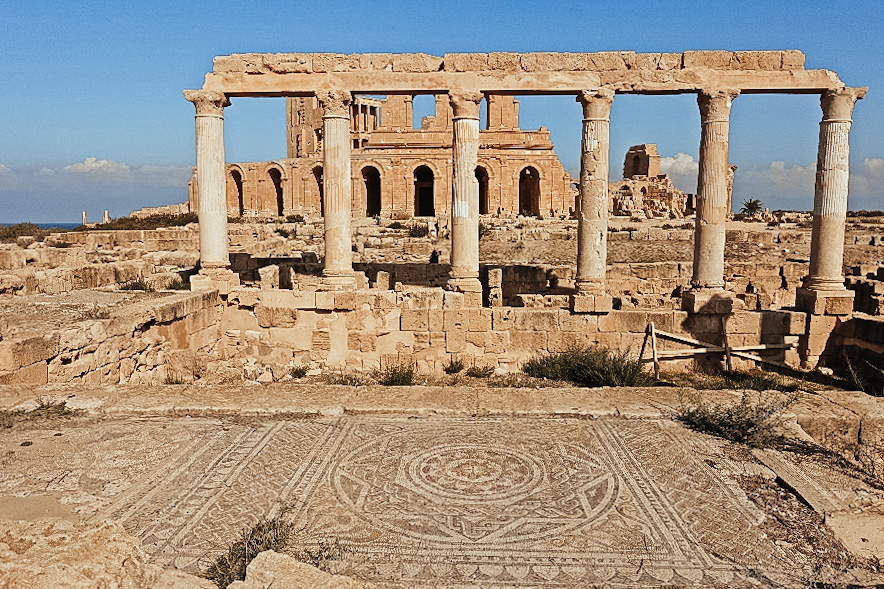
Well, we knew they were both amazing and we made sure to see them when visiting Libya. But it was better than expected.
The city of Sabratha is much smaller as everything is closer together.
There are the Roman latrines (public bathrooms), incredible marble columns, and what is left of the Roman baths. The most unique parts were the mosaics and tiles that can still be found here.
Some of them have been moved to the museum to prevent them from being further damaged which was unfortunately closed.
We explored the site, finding everything from columns, basilica, and temples.
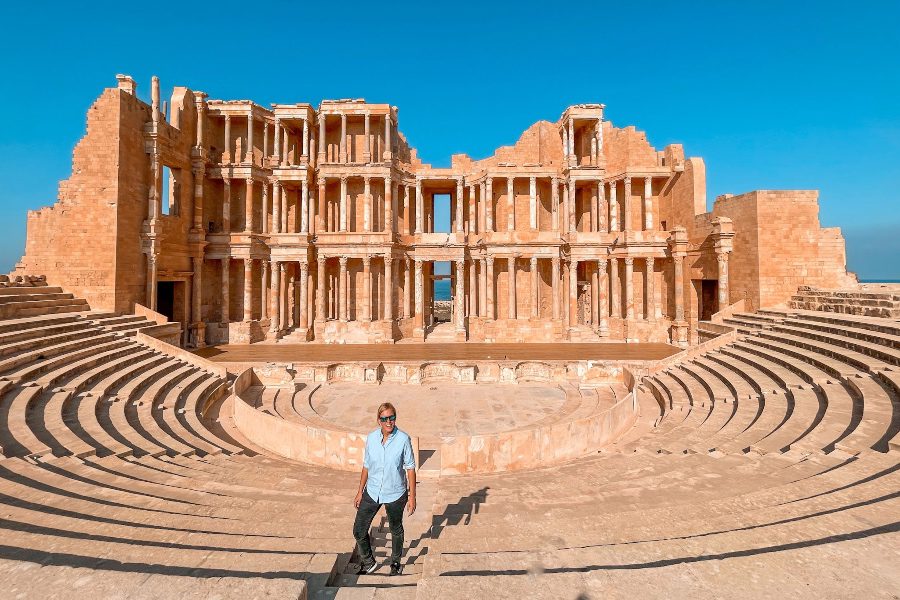
In the end, we got to see the main theatre which has been nicely restored, and it gives you goosebumps when you first walk in.
The breeze of the Mediterranean passes through the main arches on the main stage, a smart way to keep the performers as well as the crowd cool.
With an auditorium measuring close to 95m in diameter, it was the largest theatre in Africa and it was built in 190 AD. The 4th-century earthquake destroyed it, but Italian archeologists restored most of it back in the 1920s.
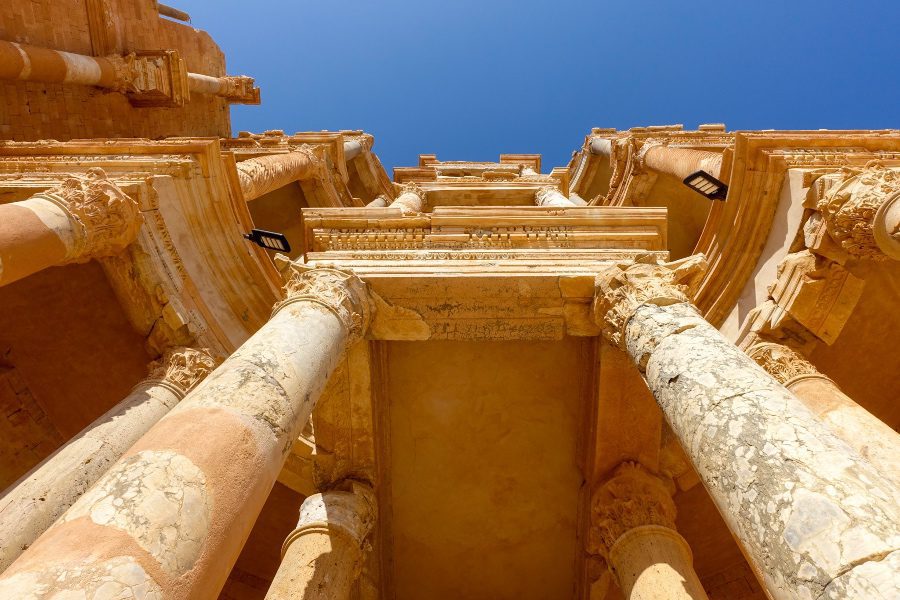
Our guided tour went for about 4 hours as we had a fantastic local guide here, Terek. So knowledgeable and passionate, we could listen to him for hours.
As we walked across the ruins, the sound of gunshots in the background interrupted his speech.
He just smiled and said that high school kids were getting the results from the final graduating exams and the gunshots are fired to celebrate by their families.
His daughter was also finishing school and he was keen to buy some food and sweets to celebrate later.
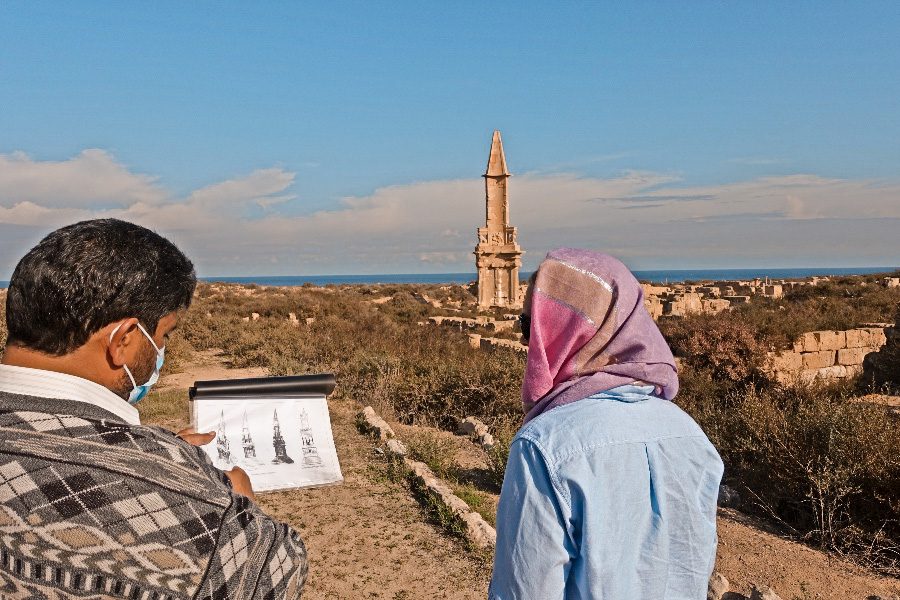
Leptis Magna
A day later, and on our final day of sightseeing we drove out to the city and ruins of Leptis Magna. We were warned that this will be our highlight of visiting Libya, as Leptis Magna is huge and really well preserved.
Leptis was constructed of sturdy limestone which is more resistant to earthquakes and the ravages of time. The ruins are wonderfully well preserved and you can really imagine the city in its heyday.
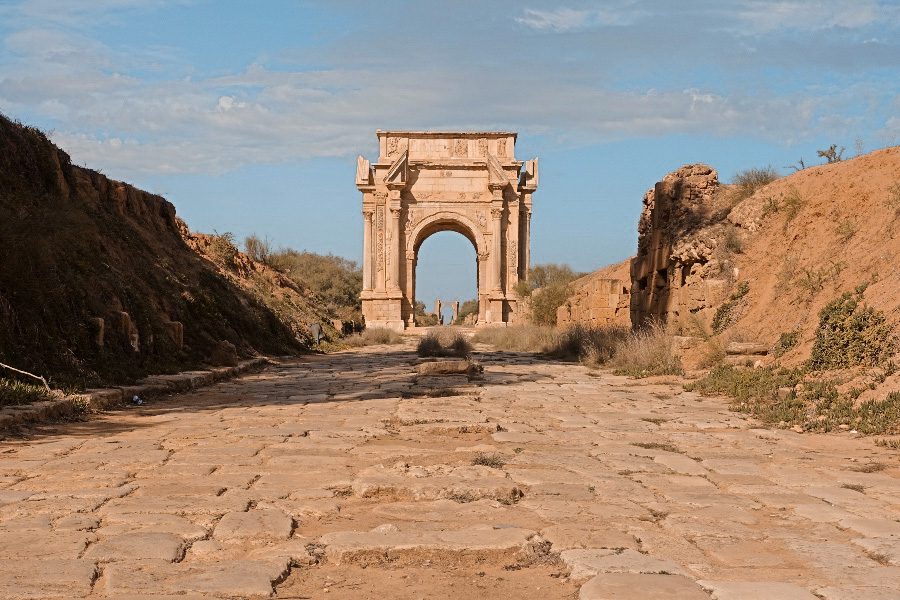
Magna stands for magnificent and it certainly delivers. First, we visited the amphitheatre that could host 16,000 spectators and was hollowed out of a hill in the 1st century with a view of the Mediterranean Sea.
When the Italians arrived in Libya (Libya was a colony of Italy from 1911 -1943) they found the amphitheatre completely covered by sand and went on to restore it.
They dug out the whole arena and even parts of the Circus Maximus that is right next to it, dangerously close to the coast.
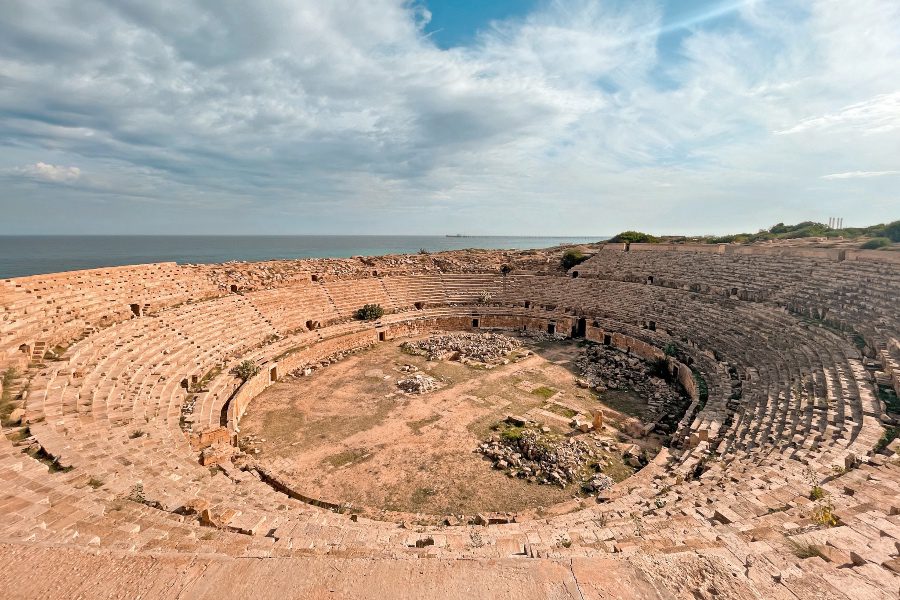
The other parts of Leptis Magna are about 3 km away and it is huge. We jumped back into the car to get to the main entrance. Here we found the best-preserved Roman baths we have ever seen.
You could still see the pipes they used to heat up the hot spa room, the tiles that decorated the floor, and the central pool.
And since most of it is actually still standing you could really appreciate the complex design of different rooms.
We have seen a photo of a friend visiting Libya last month so we knew that one of the key elements that are still standing are Roman latrines.
The marble-made seats have survived the time to entertain the few visitors. It seemed to be a real social thing during Roman times, the person next to you was close enough for you to have small talk. Hmm..
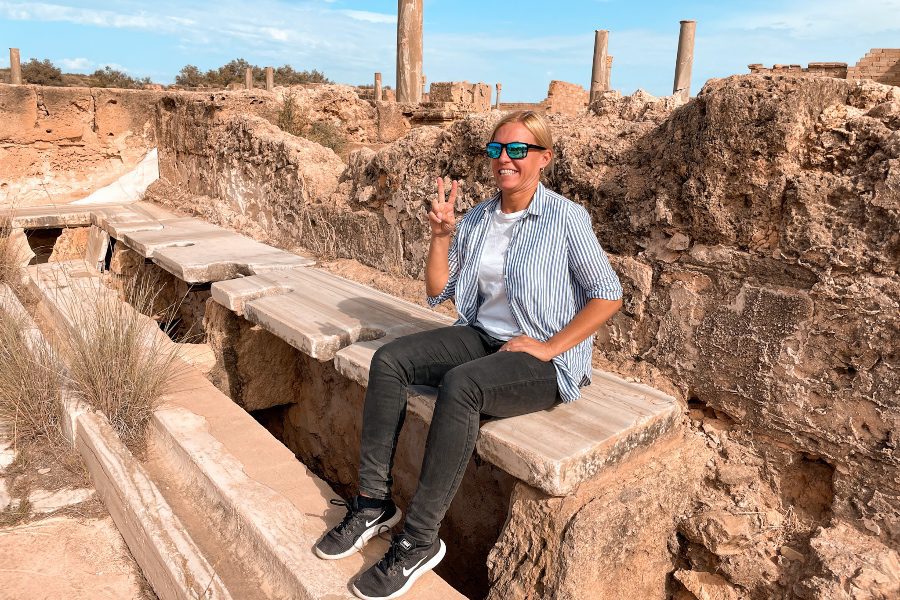
The Roman Forum here, 100 metres by 60 metres in size and you could probably spend a week here to be able to appreciate every detail – it was almost overwhelming to choose where to look… the faces of Medusa carved in marble have also survived!
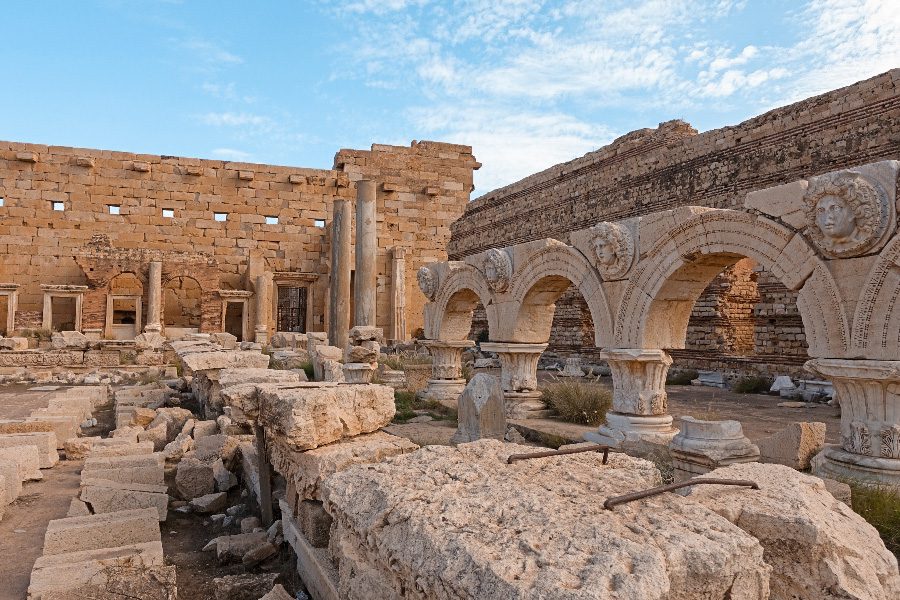
Then finally, we arrived at the main theatre of Leptis Magna.
It’s hard to think of another place we have visited that is this huge. The centre stage and the acoustics of this place once again reconfirmed the genius nature of the engineering of the Romans.
If you stand exactly in the middle of the stage your voice carries around and bounces around in echo. So everyone in the audience could hear. Just marvellous.
It is the second-largest surviving theatre in Africa after Sabratha and walking up the stairs and then looking back at it was just the perfect way to finish our visit here.
If you ever get the chance to visit Leptis Magna, don’t miss seeing these 6 EPIC places!
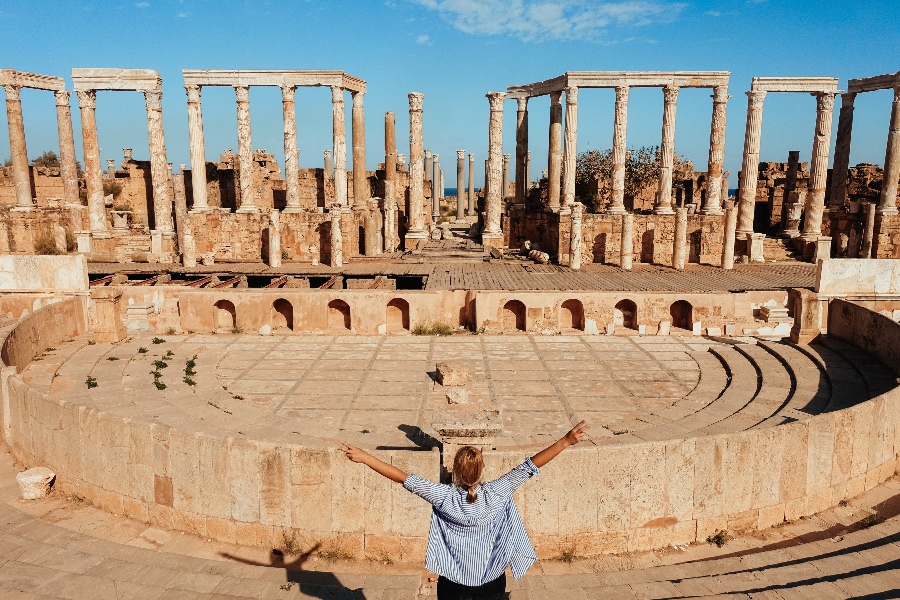
This is probably the most common question we got. Is it safe to visit Libya? Is there a war with Libya? What happened in Libya?
In all honestly, the situation is complex. In a nutshell, Libya was under the dictatorship of Gaddafi for 40 years before he was overthrown during the Arab Spring in 2011.
Since then opposing parties claim control and well, the instability of the government makes Libya very fragile.
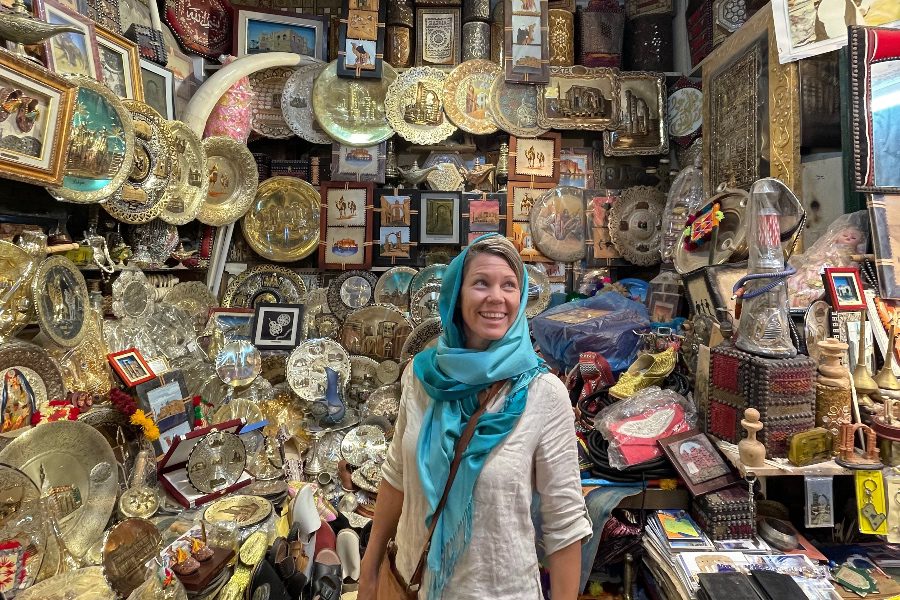
But is Libya safe to visit for a few days?
During our time here, we felt safe the whole time. Of course, we had a guide and a driver with us exploring the different places as not only is Libya one of the least visited countries when it comes to tourism, organising a trip is not so straightforward.
Libya is not a destination for first-time travellers.
However, for those seeking to see a truly unique, culturally and historically rich country, visiting Libya might just be a destination to consider.
As our visit to Libya took place before the elections in December 2021, a lot can change in the coming months.
We do hope one day for Libya to become stable enough for its citizens to enjoy better opportunities and for some curious travellers to explore this unique country.
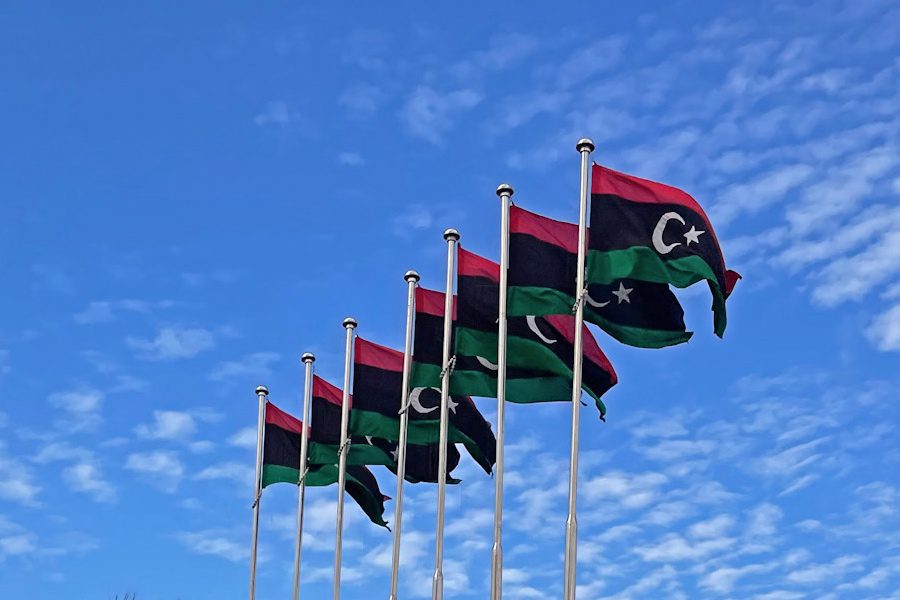
Our trip to Libya was fantastic, however, this isn’t an easy country for tourists to visit.
If you are planning on visiting Libya, you need to research your options. We can recommend the company we travelled to in Libya with here, in our post about how to visit Libya. You can find more useful information in the post too.
We really enjoyed Libya cuisine, and these 10 most popular foods in Libya were fantastic!
Do you know the answer to how many countries in Africa are there? 54 or 55?
Interested in knowing what the most popular dish is in every country in Africa? Our Food Map of AFRICA has them all!
I hope you enjoyed this blog post and our personal experience in Libya. If you have any other questions, let us know in the comments.
✈️ Flights: We use Skyscanner to book cheap flights worldwide.
🏨 Accommodation: Booking.com is our preferred platform for booking hotels and accommodation.
🏥 Travel Insurance: We recommend Heymondo (Get 5% off Heymondo) & SafetyWing
🚌 Transportation: Trainline is the best website to reserve trains. We use Omio to book transport worldwide. For travel in Asia, we use 12Go.
🚘 Car Rental: We use DiscoverCars to book rental cars worldwide.
👫 Group Tours: G Adventures OR compare multi-day tours worldwide with Tourradar.
📸 Day Tours & Trips: GetYourGuide & Viator are the only two platforms you need.
📚 Lonely Planet: The Best Range of Travel Guides & Ebooks, and FREE Shipping! (use code RACHELDAVEY10 for a 10% discount)
🎒 Luggage: Osprey Farpoint 40L Backpack or Samsonite Luggage Range.
🛄 What to Pack: Don’t forget your Universal charger and a good power bank. To help you pack the essentials, here is our ULTIMATE Packing List for all Travellers.
🐶 Become a House Sitter: Join Trusted Housesitters and enjoy FREE accommodation worldwide. Use our invite to receive 25% off your new membership.
💰 Send Money Anywhere: WISE & Revolut are the best online accounts that let you send money, get paid, and spend money internationally. Both are so easy to use and way cheaper than any bank transfer.
📶 Stay Connected: Airalo eSIM allows you to get connected the moment you land at your destination, and you can avoid those expensive data roaming charges. We LOVE this product! Use promo code NOMAD15 for 15% off ALL eSIMs (new Airalo users only) OR use NOMAD10 for 10% off ALL eSIMs (for existing Airalo users)
✅ Check out our Travel Gear and Travel Resources for more valuable tips to save you money!
2 Comments. Leave new
So pleased you made it to Libya in the end. We preferred Sbratha to Leptis. Did you feel the same way? Also very happy you had a peaceful stay. Our 5 weeks there was a bit traumatic at times! So many memories and a strong desire to go back.
We loved both Sabratha and Leptis Magna, but somehow we found the theatre in Sabratha more amazing. Maybe because we went there first? Glad to hear you had an amazing time when you visited. There are still areas we would love to see in the future.